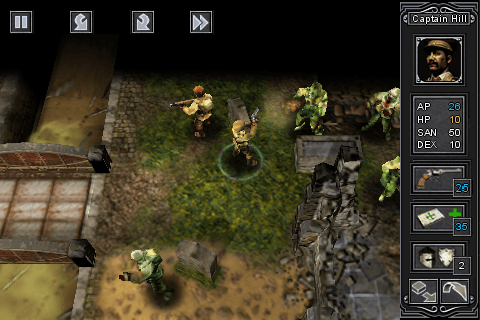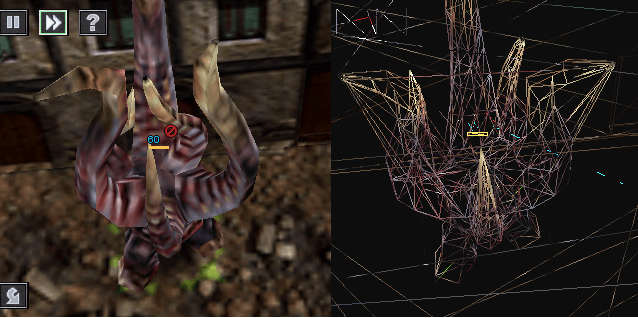- Wondering how to get Monopoly GO! free rolls? Well, you’ve come to the right place. In this guide, we provide you with a bunch of tips and tricks to get some free rolls for the hit new mobile game. We’ll …
Best Roblox Horror Games to Play Right Now – Updated Weekly
By Adele Wilson
Our Best Roblox Horror Games guide features the scariest and most creative experiences to play right now on the platform!The BEST Roblox Games of The Week – Games You Need To Play!
By Sho Roberts
Our feature shares our pick for the Best Roblox Games of the week! With our feature, we guarantee you'll find something new to play!All Grades in Type Soul – Each Race Explained
By Adele Wilson
Our All Grades in Type Soul guide lists every grade in the game for all races, including how to increase your grade quickly!
Call of Cthulhu: The Wasted Land, Developer Diary #3
Hello once more, fellow Gamezebo readers. I’m Tomas Rawlings, the designer of the new upcoming Call of Cthulhu: The Wasted Land, a role-playing/strategy game set in the midst of the First World War which draws from the multi-award winning paper role playing game of the same name, which coincidently celebrated its 30th anniversary this year.

Hello once more, fellow Gamezebo readers. I’m Tomas Rawlings, the designer of the new upcoming Call of Cthulhu: The Wasted Land, a role-playing/strategy game set in the midst of the First World War which draws from the multi-award winning paper role playing game of the same name, which coincidently celebrated its 30th anniversary this year.
This is the third developer diary we’ve done for Gamezebo, with the other two looking at design and art. This time we’re going to look at technology, because as developers, we’re always looking to squeeze more graphics, effects and sounds out of the machine. This is why games development is a high-tech business; games are one of the few applications that will test the limits of your hardware. To make a game is to bring together the art, sound, music, gameplay and text, and re-present them to the player as a game. Sounds simple, but in reality it’s very complex.
The thing that ties all of these assets together is the game engine. There are lots of engines out there from CryENGINE to Unreal to Unity. For ‘The Wasted Land,’ we took the foolhardy brave decision to develop our own technology. Not every games developer has the capacity to do this, nor needs to, but we are lucky enough to have as our lead programmer Michael Devereux. Michael is a games industry veteran who cut his teeth working Cutthroats (PC) back in the 90’s and since then has worked in technology / tools R&D for a wide array of games from Sony’s Buzz! (PS2/PS3) to the recent Eat Them! (PSN).

Early on in the development process we sat down to plan the graphics technology of the game, and the first issue we had to resolve was the question of if we were going to do the game 2D sprite based or 3D models, or possibly a hybrid of both. The advantages of sprite based would be the rendering speed and the speed in which the art could be created, the disadvantage would be the limited animations and texture storage for what we wanted the game to look like.
We also wanted the game to represent the people and monsters to a realistic size. This is to help give the monsters in the game a sense of menace, so when a Dark Young attacks your character, you feel the threat of its size, whereas if each unit was just an icon, this is lessened somewhat. We also wanted the landscape to be proportional to the size of the units, to build on this idea and to give the landscape a role in the strategy of the game.
These decisions are in contrast to a game like Advance Wars, where each graphical unit on the landscape represents a squad. Another example is the strategy RPG The War of Eustrath, where each graphical unit is only a single character, and in game they are represented by icons of the units mech-helmet. I’m a fan of both of these games, especially Advance Wars, but for our game we need to see the people to develop a rapport with them, and to watch them go insane and die… For this we needed 3D.
If we’d chosen 2D, then to show all of these animations for each character means having sprite sheets for all the attacks, weapons, spells, madness, death and moment. In a 2D engine the animation is a bit like a flipbook, where you overlay one image with the next. All of the different frames of animation for each unit are stored on a single sheet – the sprite sheet, for the engine to grab and display. The problem is that the more actions a unit needs to perform, the larger the sprite sheet becomes.

So the decision to drop 2D sprites wasn’t that difficult. From the start we always wanted to target more powerful platforms i.e. iPad / iPad2 maybe Xbox 360/ PS3, but keep the quality as close as we could across all platforms while pushing up rendering quality, so opting for 3D models would help us achieve that. The graphics scale in detail according to the platform, so you can clearly see the differences between the standard resolution (480×320) and Retina version on the iPhone for example.
That is a brief overview of why we’re writing a game engine and why it’s in 3D. There is of course much more to making a game engine than we’ve been able to squash in here, but I hope that gives you a bit of insight into games development in general and The Wasted Land in particular.
It’s been a long journey and a lot of work, but we’re approaching our release date where we ask you to part with a few of your hard earned coins in exchange for a digital simulated environment where you get eaten by a tentacled monster and/or go mad and gibber at the moon. We hope you’ll join us in the howling! If so you can follow us on Facebook or Twitter and also on our blog. Thanks! (;,;)
More articles...
Monopoly GO! Free Rolls – Links For Free Dice
By Glen Fox
Wondering how to get Monopoly GO! free rolls? Well, you’ve come to the right place. In this guide, we provide you with a bunch of tips and tricks to get some free rolls for the hit new mobile game. We’ll …Best Roblox Horror Games to Play Right Now – Updated Weekly
By Adele Wilson
Our Best Roblox Horror Games guide features the scariest and most creative experiences to play right now on the platform!The BEST Roblox Games of The Week – Games You Need To Play!
By Sho Roberts
Our feature shares our pick for the Best Roblox Games of the week! With our feature, we guarantee you'll find something new to play!All Grades in Type Soul – Each Race Explained
By Adele Wilson
Our All Grades in Type Soul guide lists every grade in the game for all races, including how to increase your grade quickly!







